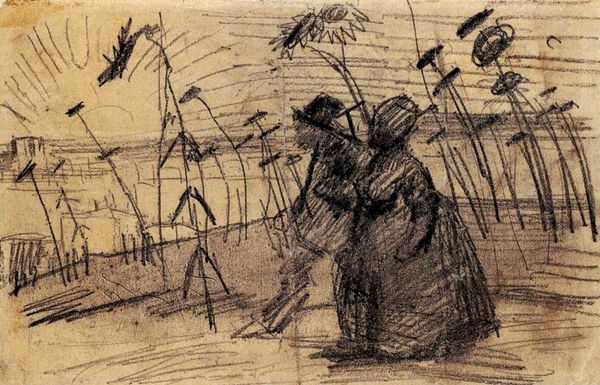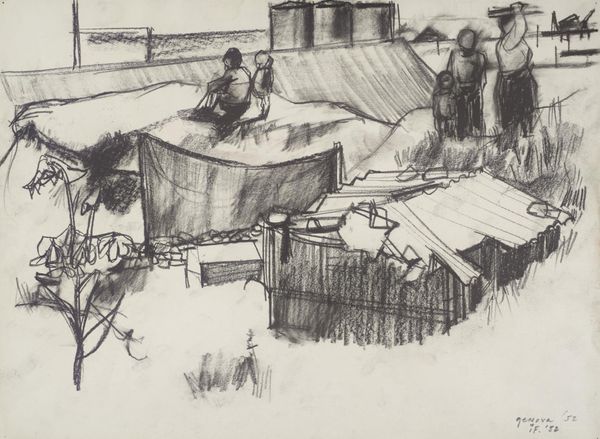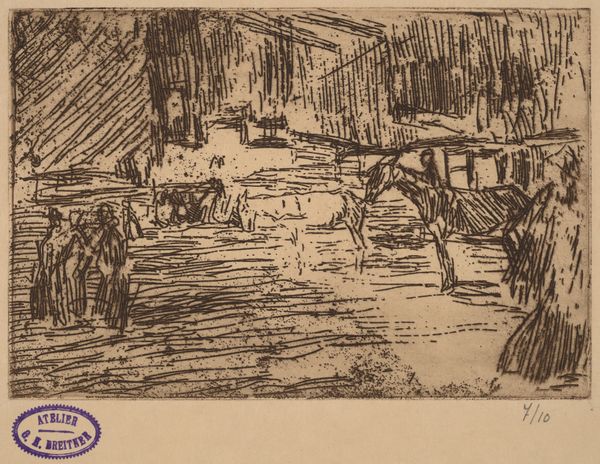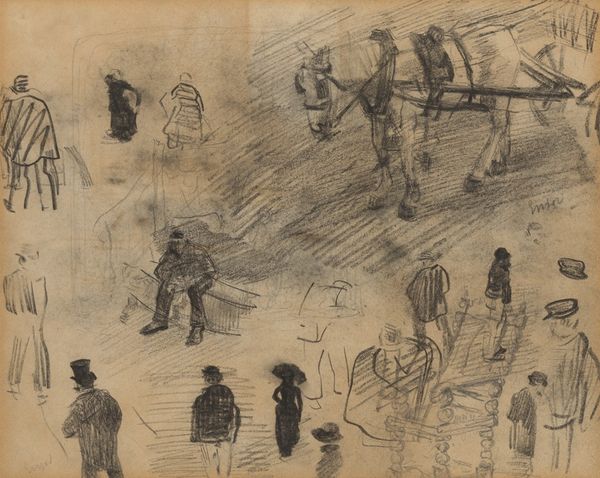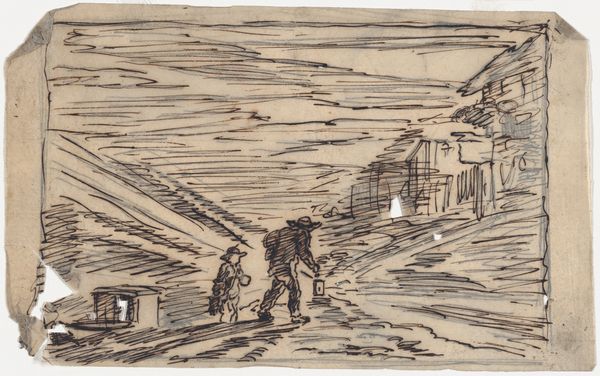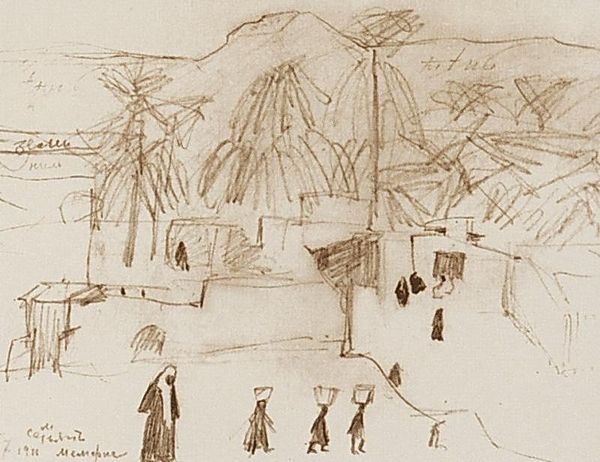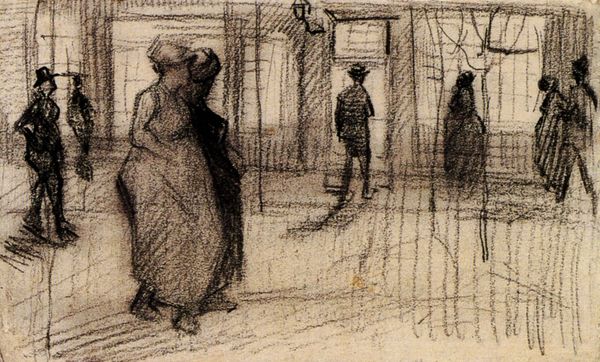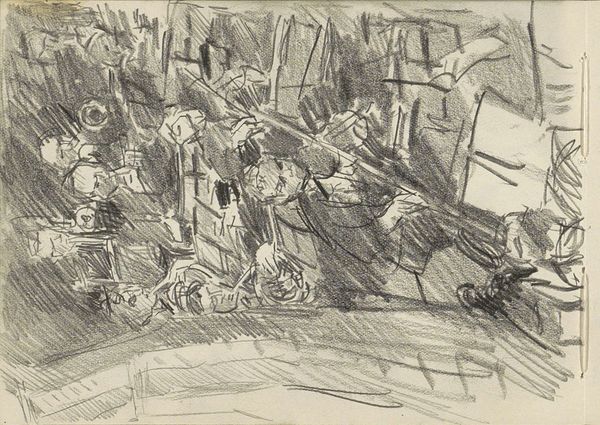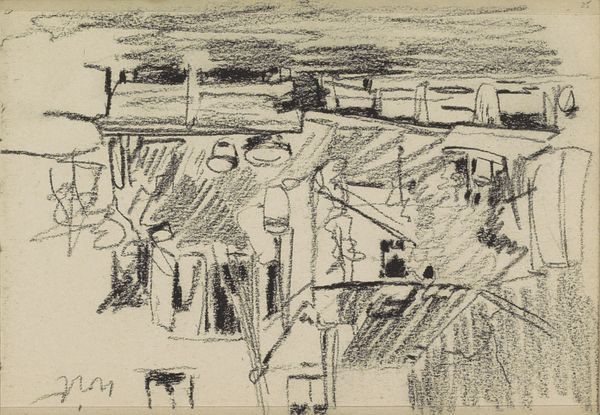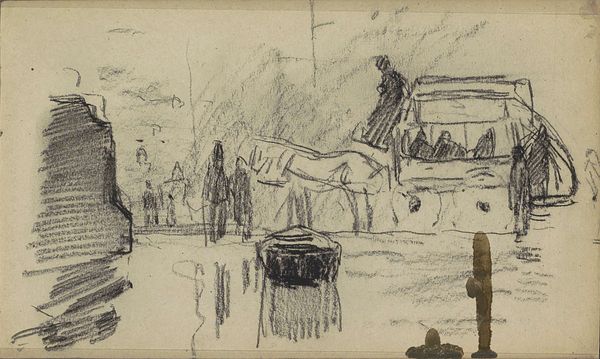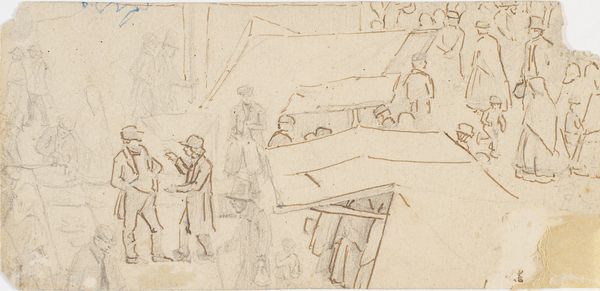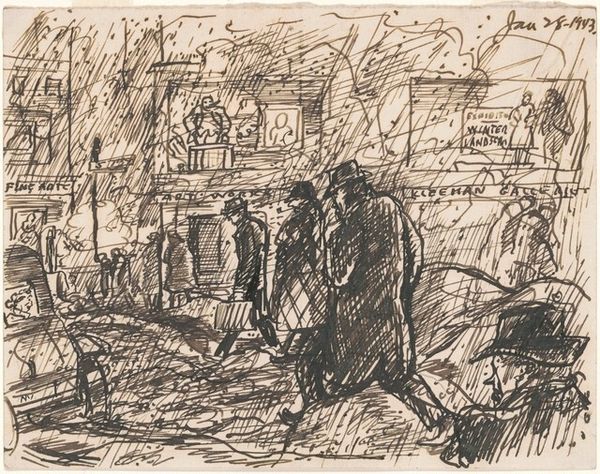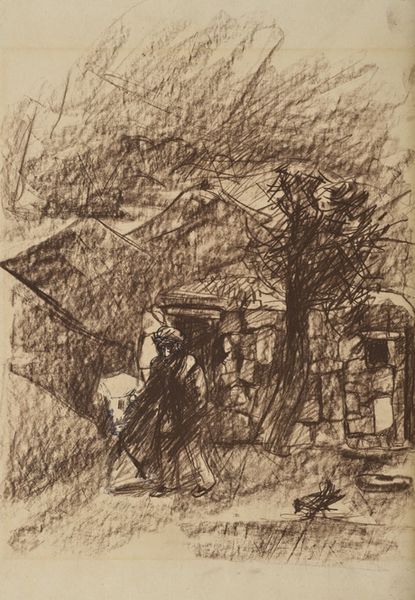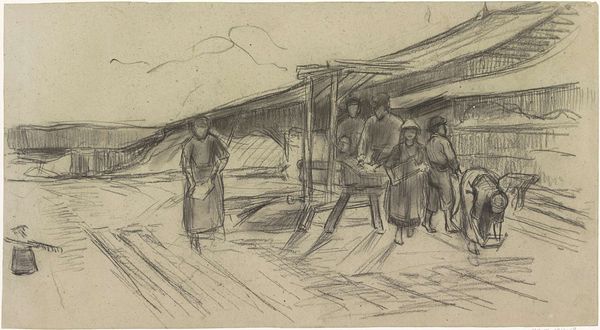
drawing, pencil
#
architectural sketch
#
landscape illustration sketch
#
drawing
#
amateur sketch
#
impressionism
#
pencil sketch
#
incomplete sketchy
#
landscape
#
detailed observational sketch
#
pencil
#
cityscape
#
fantasy sketch
Copyright: Public domain
Editor: This is "Strollers and Onlookers at a Place of Entertainment" by Vincent van Gogh, a pencil drawing from 1887. There's something fleeting about it, a sense of capturing a moment. The figures are sketched quickly, almost like shadows. What stands out to you in this seemingly simple work? Curator: The sketch, yes, but think of it not as fleeting, but rather, seeking. Consider the repetitive hatching, almost frantic, across the architectural forms above the figures. It evokes not just shadow, but perhaps anxiety? Note the rigid verticals of the fence countered by the tilted, precarious angles of the rooftop structure. The figures themselves, abstracted silhouettes, almost faceless, suggest anonymity within the burgeoning modernity of the late 19th century. They are observers, yet simultaneously, they are observed, flattened and dehumanized. Van Gogh used pencil on paper to symbolize both alienation and observation, and you see in the marks of its creation, searching for something solid. Editor: So, the sketchiness isn't just a stylistic choice, but speaks to a deeper unease? The way the people blend together almost negates their individuality. Curator: Precisely. What could that merging of bodies represent in 1887 Paris? Are they a mass, a crowd losing themselves in spectacle? Van Gogh's hand doesn't fix them, doesn't glorify them. Look again at the drawing. Even in leisure, there is, to me, an unsettling undertone. Editor: I hadn’t considered how the technique itself contributes to the feeling. Now the roughness seems deliberate, a way to highlight a lack of connection even in a public space. I see it differently now! Curator: Yes. It makes the entire drawing an icon, in fact, of what Baudelaire called 'modern life' -- all its fleeting beauty and anxiety!
Comments
No comments
Be the first to comment and join the conversation on the ultimate creative platform.
